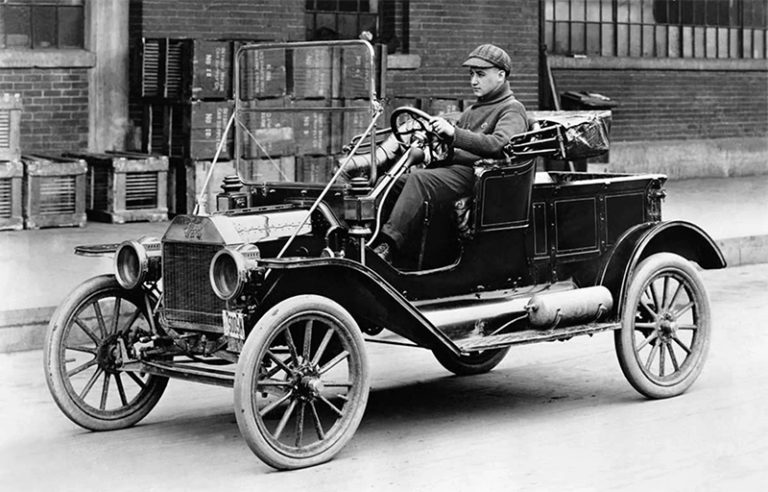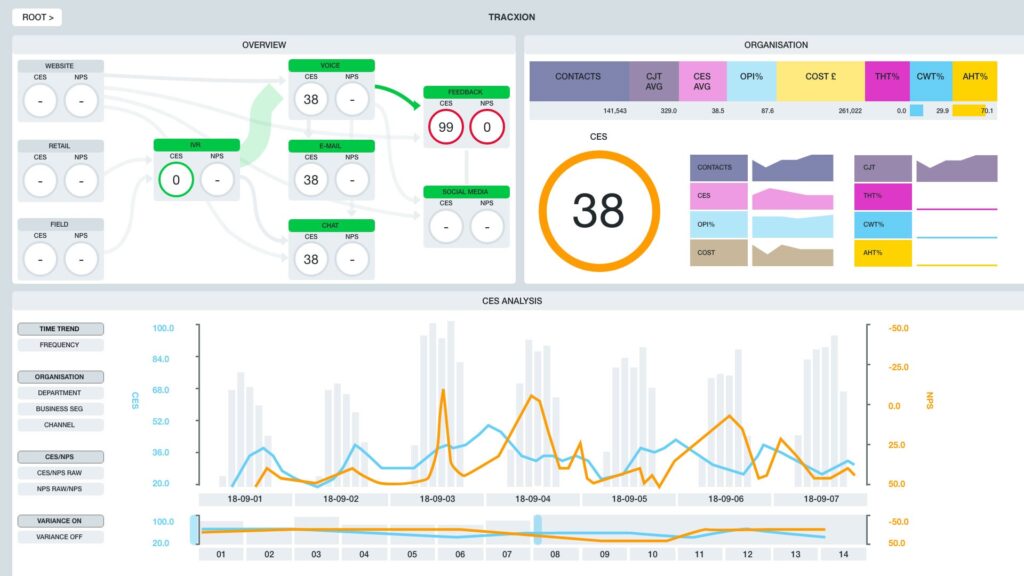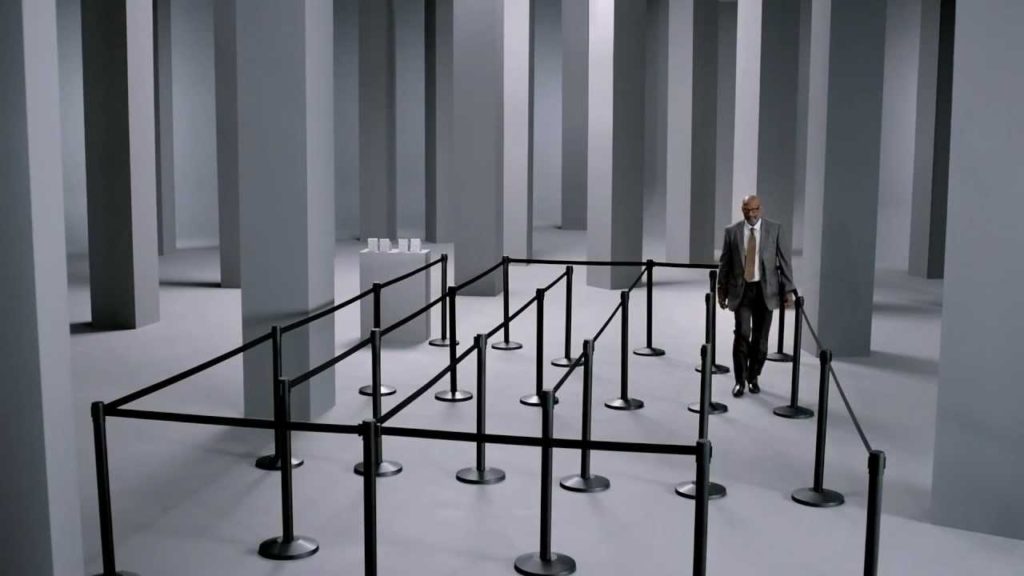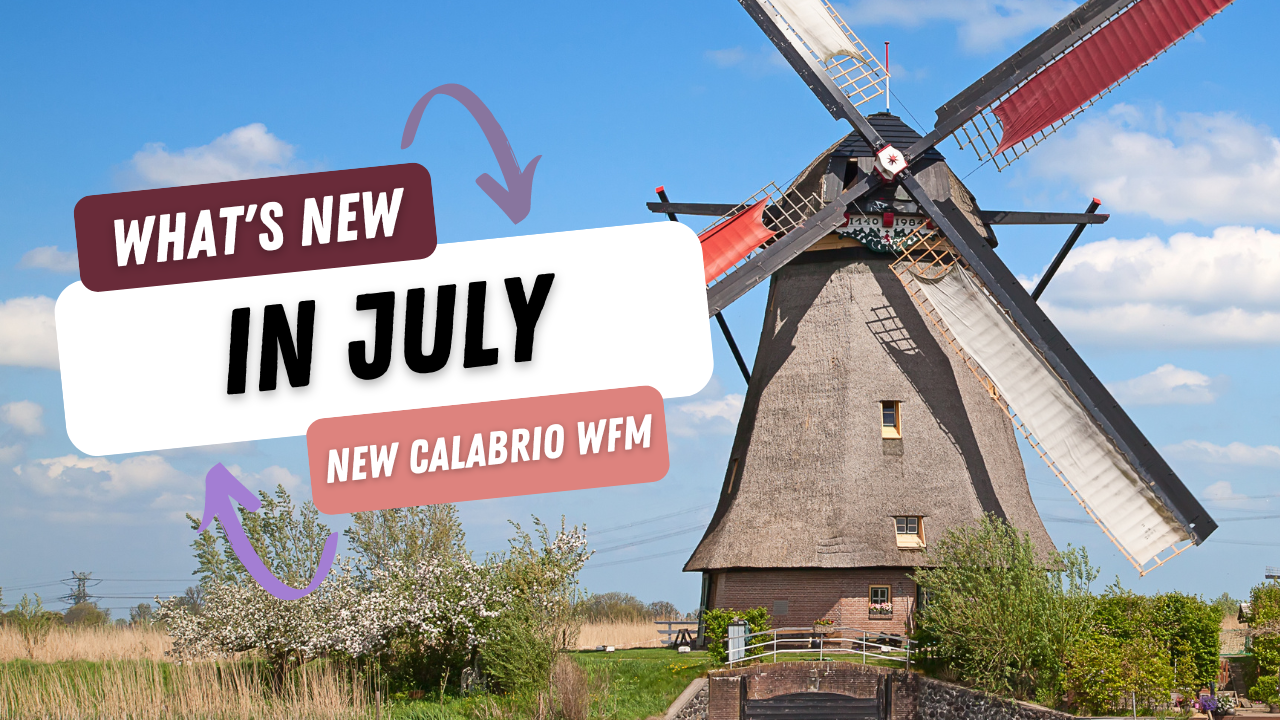Customer Journey Analytics and Understanding
Understanding and acting on Customer Effort is a critical success factor for business today. In a world where business models are being disrupted at an ever-increasing pace, having the ability to first understand the Customer Journey and then reduce it may be the differentiating factor for disruptors and incumbents.
88% of the fortune 500 companies from 1955 – no longer exist. All industries face disruption. It is important to understand that successful disruption, or changing to meet disruption from an incumbent standpoint, is driven by one factor – someone figured out how to make the Customer Journey less onerous.
This is where the emerging practice of Customer Journey Analytics and subsequent Customer Journey Automation paves the way to industry leadership. Employment of a successful real-time understanding of the Customer Effort guides the changes needed to succeed in an ever-changing environment.
What is Customer Journey Analytics (and why does it matter?)
Customer Journey Analytics is gaining real-time and historical insight into the customer effort that is being spent in maintaining a relationship between a consumer and a business. Inherently, this is a multi-channel process as customers interrelate with companies across the web, voice, chat, email, face to face and mobile applications, to name a few.
Customer Journey Automation then applies this insight in real-time or near real-time to reduce this effort.
The History of Customer Journey Analytics and Customer Effort Scoring

Looking back at major socio-economic changes in history, effort reduction has occurred almost organically. It wasn’t given a name or term of Customer Effort Reduction. It happened as changes like The Industrial Revolution. The locomotive and then the automobile all removed effort in travel ultimately. The machines developed and applied to manufacture goods removed effort to attain these goods through lower prices, greater availability and competition.
Henry Ford’s application of the production line assembly of the Model T was a revolutionary process.
It was a way to reduce effort, largely not thought of as customer effort reduction until you look at the customer effort to buy an automobile. Every dollar they needed to invest cost the consumer effort. The reduction of the price from a reduced effort model created a new market.
Journey analytics and effort insights gave rise to formalised approaches like six sigma and kaizen. These are a basis for understanding a journey to make a product. Ultimately, these inspire a broader and more impactful customer journey view.
More recently, technological changes have reduced effort. The advent of the PC disrupted the use of typewriters. Errors were correctable without wasted paper or the dreaded whiteout. Finished products were shared more easily across networked PCs.
Couriers gave way to Fax machines which in turn yielded supremacy to digital documentation. Brick and mortar retail has become a digital experience – who hasn’t ordered from Amazon or another e-tailer in today’s world.
Examples of Customer Effort Reduction driving disruption

Whatever happened to Motorola? In the 1990s the device was the RAZR. This incumbent king of the cellular world was light, compact, and functional …. to a point. Sending a text was a customer effort opportunity for disruption. If you wanted to send a text to ‘meet at 4 pm’ it took 20 keystrokes and ten 2 second delays to send the message.
Enter Blackberry, where the same text involves 12 keystrokes and no wait time. Even more, type full emails and send them without returning to the computer to do so. Bye-bye Motorola.
Entertainment used to be full of effort. Want to see a movie? Check the listings (by leafing through the actual paper), drive to the theatre, wait until the movie is scheduled and pay for each item and ticket a-la-carte.
Enter Blockbuster, drive to the store, pay a price that allowed you to see the movie with others for one price (reduced economic effort). Return and get another one.
This then evolves to Netflix 1.0 and subscription pricing – no a-la-carte. Delivered to you (in your mailbox). No more late fees, no more driving to and from the store. Then Netflix introduced digital streaming where you don’t have to spend time and effort waiting to get the shows you want to see, it’s always there at a click of a button. This new way customers were absorbing content meant that the whole industry needed to change, including a drastic change in its economics.
How to Reduce Customer Effort in the most important future activity – Customer Experience
In order to reduce customer effort, the business needs to understand the customer journey in real-time and be able to act on that insight. It is a holistic view of the customer effort spent across multi-channel environments; web, IVR, voice, chat, email, etc.
The base requirements and the process are to Connect, Visualise and then Automate to gain the insight and act on it. Think of the customer who is trying to make a payment on the web, but it isn’t working. When the company has a siloed view of the experience, the customer and ultimately the agent bear the brunt of the disconnect. The customer spends the effort to attempt the transaction online, then dials in for assistance waiting in a queue.
Upon connection to an agent, the agent follows the ‘digital first’ script and sends them to the web to try again or there will be a fee to make the payment with the agent. The customer tries again and then calls again. The agent from the same support level tries to follow the digital-first script again and the customer now is upset. An exception is made, perhaps requiring the customer to sit on hold while a supervisor approves and the payment is made.
In this example, the IT department may get an hourly report or notice that specific functionality, such as web payment, is not working. This, in turn, may be distributed to other operations notification lists. All the while, the customer and the agent are bearing the effort to try to resolve the desired request with greater and greater levels of different kinds of effort.
When customer journey analytics and automation is well constructed and applied, this effort is reduced in real-time. The customer goes to the web and attempts payment. The system fails, the customer receives a real-time message to call payment in. The customer calls and receives priority routing to ensure further effort is not spent (as much as possible) waiting to speak to an agent.
The Agent receives a notification of the level of Customer Effort expended and intelligent insightful notification that the customer simply wants to make a payment, the system is down and the fee does not apply. A potentially bad situation is resolved as effectively as possible.
Ultimately, how does Customer Effort understanding help NPS?

The CES (Customer Effort Score) is a positive axis (0 to infinity) on the left. NPS for the same company on an inverted axis (negative is to the top) on the right.
The yellow CES and the green NPS lines correlate highly clearly showing the higher the effort, the lower the NPS. This is not the key insight here, however.
The key insight is that CES here is measured on 100% of transactions and NPS is based on a <2% response rate. Hence, CES when fully measured, in real-time, tells you what your NPS will be!
If you want to improve on the key question of ‘would you recommend company X’ [the basis of NPS surveys] — reduce the effort from the relationship.
Best Practices for Creating a Customer Effort Reduction environment

Define
Identity what is a baseline Customer Effort level based on the Customer Journey Analytics history for, initially, major customer effort transactions.
Measure
Enlist a replicable Customer Effort Scoring methodology for real-time effort calculation.
Analyse
Have relevant, real-time visualisations of Customer Effort.
Implement
Develop real-time rules to trigger actions for the agent and customer effort reduction.
Control
Trend and continue to improve on levels of Customer Effort reduction by focusing on outlier high Customer Effort Scenarios.
As we all look to improve our ventures for the better in the future, we must put the customer first. We must understand the entire experience regardless of the channel the experience occurs in. Connecting to the customer experience and coordinating the channels to ensure consistency and consideration will differentiate the companies to undertake this challenge.







